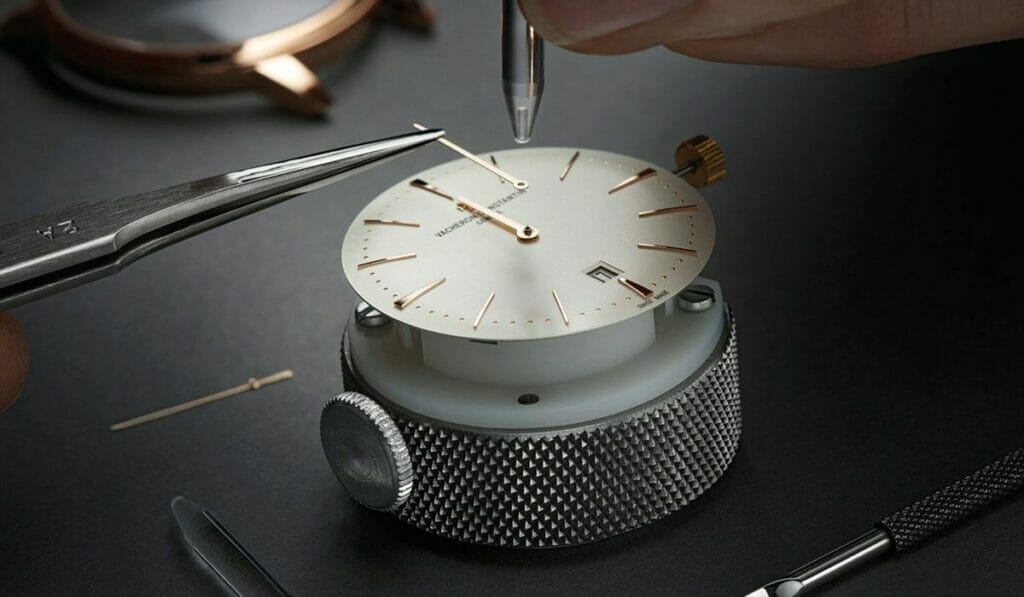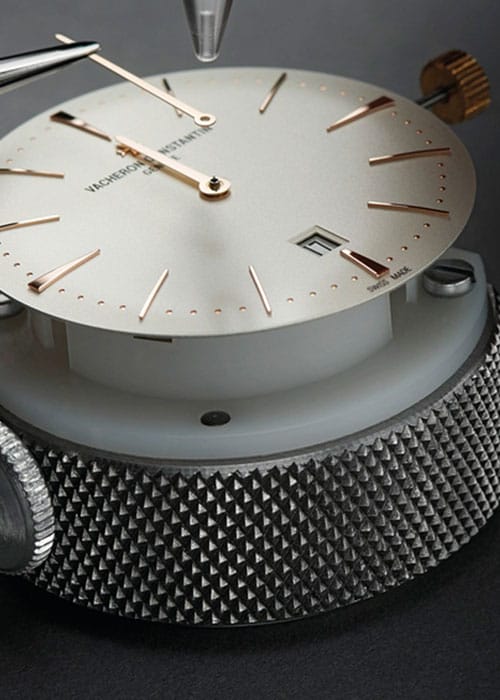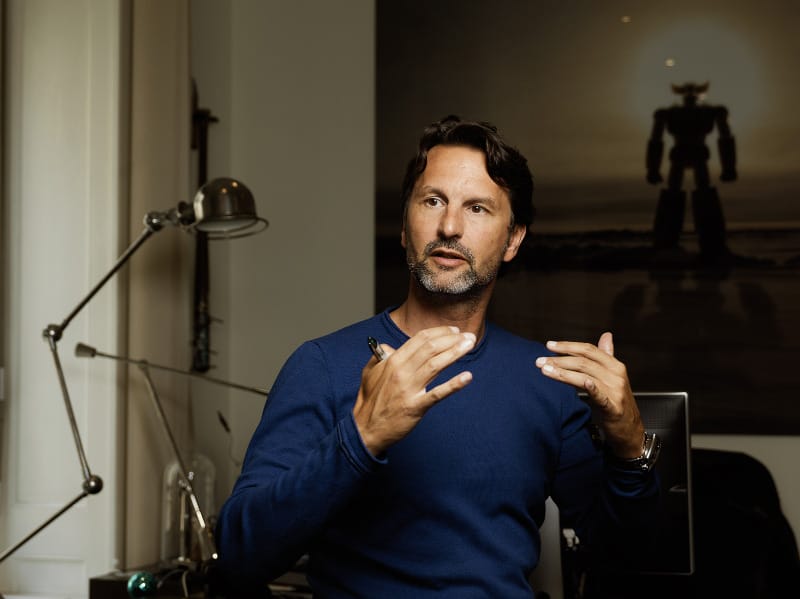At this year’s Salon International de la Haute Horlogerie (SIHH) watch fair in Geneva, several interesting new spins on watch-case materials were introduced: Richard Mille’s ultra-light carbon-based graphene; Audemars Piguet’s hammered Frosted Gold… and H. Moser’s cheese.
Yes, that’s right. One of the key highlights for the independent luxury watchmaker was the Swiss Mad, a watch made from a composite containing Swiss cheese. And not just any cheese, but Vacherin Mont d’Or, which comes from the same village as H. Moser CEO Edouard Meylan. It also has a cowhide strap. The watch’s raison d’etre: To make a satirical statement against the criteria that companies have to meet in order to label their watches as “Swiss Madeâ€.

‘ABSURD’ STATEMENT A cheese-containing case and a cowhide strap are part of H. Moser’s “100% Swiss†watch.
At the beginning of this year, new laws kicked in, requiring 60 per cent – instead of the former 50 per cent – of the value of a “Swiss Made†product to be of Swiss origin. For Meylan, these standards still remain far too lax. Speaking to us at the SIHH, he elaborated on the Swiss Mad timepiece: “It’s an absurd idea. We wanted to open people’s eyes to this issue, and the best way to do that is to be extreme, provocative and a little absurd.â€
WHAT’S IN A NAME?
Why does Swissness matter? The actual name of a Bill passed in 2013 to protect products of Swiss origin, the term is more than a matter of semantics – it’s big business. Studies have shown that people are willing to pay more for watches from the Alpine nation. While figures vary, a 2016 survey by the University of St Gallen found that respondents were willing to pay up to 100 per cent more for a Swiss luxury watch, as compared to one with no known origin. That’s a lot of Swiss francs.
This positive perception is affirmed by local watch collector and jewellery trader Christopher Yeo, who owns pieces by top Swiss brands such as Audemars Piguet, Patek Philippe and Rolex. Says Yeo: “To me, the term Swiss-made means prestige, quality, reliability and technical know-how. When a watch is made in Switzerland, I believe it bears a degree of technical quality that only a few countries are capable of achieving.â€

IN DEPTH MB&F’s HM7 dive watch features a bezel that had to be specially sourced from South Korea.
Today, a watch can be considered Swiss-made if its movement is Swiss, its movement is cased up in Switzerland, and final inspection is carried out in Switzerland. It is the definition of what constitutes a Swiss movement that has come under scrutiny, and allows plenty of room for manoeuvring: At least 60 per cent of its value – excluding the cost of assembly – must be of Swiss origin, and it must have been assembled and inspected by the manufacturer in Switzerland.
SMOKE AND MIRRORS
While most Swiss high-end watches easily meet the requirements – almost all the parts in H. Moser and MB&F timepieces, for instance, have native origins – entry-level and mid-priced watch brands have come under fire for playing fast and loose with the regulations. One way that companies can get around the rules and use largely cheaper parts from Asia, yet easily hit the 60 per cent value requirement, is to include a handful of Swiss-made components, such as balance wheels and springs. This is simply because of the extremely high costs of production in Switzerland.

CROWNING GLORY The Rolex facility in Bienne, Switzerland, where all the brand’s movement parts are made.
Dismissing the new regulations, the founder of high-end independent brand MB&F, Max Busser, says: “It doesn’t change anything. Whatever the percentage, you can always find a way around it because production in Switzerland costs so much. Between the machines and employees, producing a part in Switzerland will cost you between $180 and $200 per hour. It’s insane.â€
In an article from 2012, when the Swissness Bill was in the midst of being passed, The New York Times ran a story that mentioned entry-level watch brand Swiss Mountaineer: “Swiss Mountaineer emblazons Switzerland’s national flag on the dial of each timepiece. Does it matter that except for its Swiss movement, the watches’ components are made at a factory in Shenzhen, China? Or that Swiss Mountaineer is owned by a Hong Kong company called Golden Hawk?â€
BEYOND BORDERS
For some industry watchers, however, “Swiss Madeâ€, while a typically recognisable mark of quality, is far from everything when it comes to haute horlogerie. Firstly, while the Swiss dominate the fine-watch industry, a few other watchmaking centres – most notably in Germany and Japan – have emerged. Their products are as respected by connoisseurs as any ticker crafted in Switzerland.





